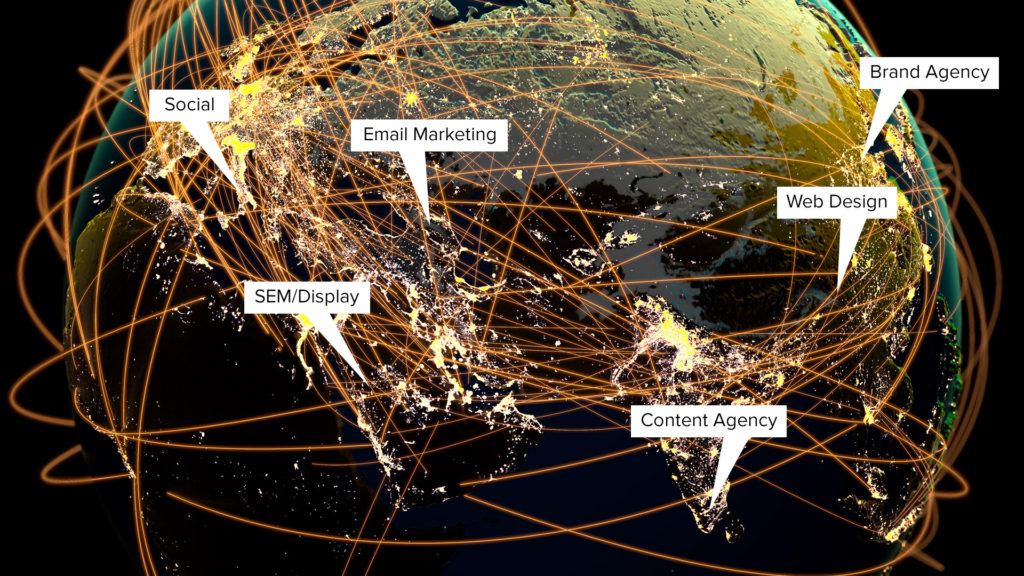Has video taken over the world yet? Not completely but, according to the latest video marketing statistics, it’s quite close.
As of this writing, 86% of YouTube viewers use the platform to learn new things and the average internet user watches at least 1.5 hours of video per day. Clearly, people love video content. So, what if you were to tap into this opportunity? Effective marketing videos could bring your brand to life, make it more memorable and turn your target customers into loyal fans!
Why is video marketing so powerful?
The same forces that gave rise to TV in the late 20th century have propelled online video to the top in the early 21st century. There are differences, of course, but the premise is the same — moving pictures are highly engaging. If you are still not convinced why you should use video for content marketing, here are a few compelling reasons to consider doing so. Video is:
- Highly engaging. The average internet user spends over 6 hours a week watching video.
- Information rich. If a picture is worth a thousand words, then a video is worth a million. According to Forrester Research, a 1-minute video could convey the equivalent meaning of more than 1.8 million words.
- Perfect for storytelling. Video provides more ways to tell a story and evoke emotion because it stimulates a wider range of senses.
- Shareable. 92% of mobile users share videos with others.
- A trust builder. You can use video to invite customers “behind the scenes” of your business or to create more convincing testimonials and case studies.
- Memorable. Average video retention is 52% across the board.
- An SEO booster. Blogs with video can increase organic search results by up to 157%.
- A conversion booster. More than half of consumers say that watching product videos makes them “more confident in online purchase decisions.”
How big brands capitalise on video
American Greetings is an outstanding example of video content marketing done right. In 2016, the company ran a campaign called “World’s Toughest Job”. They published a single 4-minute video that spread on the web faster than wildfire. The clip went straight to the number one spot on YouTube, Facebook and Twitter and received substantial attention from media giants like The Wall Street Journal.
Another example of effective video content marketing comes from the pet food brand Purina. Instead of betting everything on a single video, Purina launched an entire video series called Puppyhood. They engaged their audience by showing the unbreakable bond between a man and his puppy. The videos received millions of views and went viral in dog lovers communities.
The viral element
An ultra-successful video marketing campaign isn’t a product of luck meets coincidence. There is a science behind viral videos and, surprisingly or not, it’s the same science that’s behind all of content marketing.
“
Any type of content could go viral if it provides valuable, actionable and realistic information.
”
Following this train of thought, it would be beneficial to think of video marketing content as a product. So, a marketing video has to identify and solve the viewer’s needs. Knowing your audience is the first step towards successful video marketing but let’s step back a bit.
Should you even create video content?
Nowadays, anyone can create video content but this doesn’t mean that they should. Even though video production is not as expensive as it was 10 years ago, creating a video takes much more time and resources than creating an article. Not only that, but there are also more things that could go wrong &emdash; script, lighting, makeup, graphics, etc. A video clip that seemed like a wonderful idea last week can prove to be an expensive mistake next month.
So, should you invest in video marketing at all?
Only you can answer this question. Research, plan and you will know.
Follow the strategy, not your gut
Going through the process of creating a content marketing strategy will help you answer key questions like:
- Who are our target customers?
- What do they want and need?
- How can we best reach them?
- What channel(s) are most accessible and relevant to them?
Once you do that, you will be able to decide whether it makes sense to invest in video marketing or not, to select content topics, and, most importantly, to measure your results.
Content strategy is a book-worthy topic which is why it’s beyond the scope of this post. If you want a complete, practical guide to content strategy, check out our free ebook “Content Marketing That Works”.
If video marketing is the future, should we throw everything else out the window?
With video gaining so much popularity, it’s natural to hear predictions that all other types of content will soon be irrelevant. In 1998, there was a strikingly similar situation in another industry. That was when the first e-reader was introduced and it was said that the paper book would soon be dead. But, two decades later, paper books are still alive and well because there are still people who prefer this medium.
Going back to video marketing, there is no doubt that it will be one of the top content marketing trends in 2019 but this alone isn’t an argument to spend every marketing cent on video. There are still plenty of internet users who like to read blog articles, or browse images, or listen to podcasts.
“
What matters most is the message, not the medium.
”
So, if we were to look at the big picture, video should be just one of the tools in your content marketing toolbox. To reach all of your potential customers, it would be wise to employ different types of media in your marketing mix.
How The Walk can help
Albeit important, video is just one part of a bigger picture. Don’t forget to figure that out (with our free download) before you get to work on your video piece. There’s a time and a place for all media, so understanding when to deliver a message and in what medium is crucial to success. As an integrated marketing agency, we help our clients create multi-touch campaigns so that all elements of their content marketing can work harder together.




